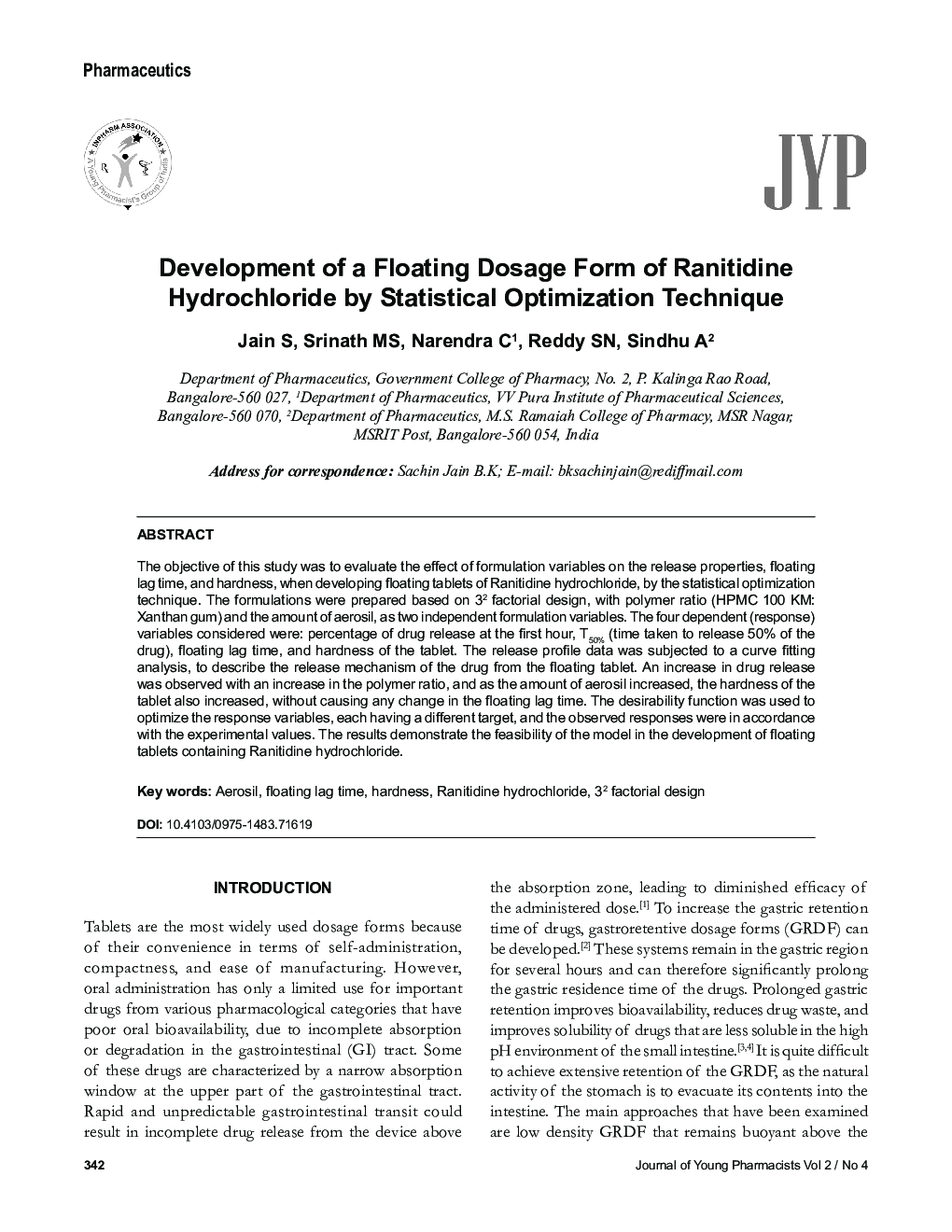| Article ID | Journal | Published Year | Pages | File Type |
|---|---|---|---|---|
| 2488797 | Journal of Young Pharmacists | 2010 | 8 Pages |
Abstract
The objective of this study was to evaluate the effect of formulation variables on the release properties, floating lag time, and hardness, when developing floating tablets of Ranitidine hydrochloride, by the statistical optimization technique. The formulations were prepared based on 32 factorial design, with polymer ratio (HPMC 100 KM: Xanthan gum) and the amount of aerosil, as two independent formulation variables. The four dependent (response) variables considered were: percentage of drug release at the first hour, T50% (time taken to release 50% of the drug), floating lag time, and hardness of the tablet. The release profile data was subjected to a curve fitting analysis, to describe the release mechanism of the drug from the floating tablet. An increase in drug release was observed with an increase in the polymer ratio, and as the amount of aerosil increased, the hardness of the tablet also increased, without causing any change in the floating lag time. The desirability function was used to optimize the response variables, each having a different target, and the observed responses were in accordance with the experimental values. The results demonstrate the feasibility of the model in the development of floating tablets containing Ranitidine hydrochloride.
Related Topics
Health Sciences
Pharmacology, Toxicology and Pharmaceutical Science
Drug Discovery
Authors
S. Jain, Srinath M.S., S.N. Reddy, C. Narendra, A. Sindhu,
